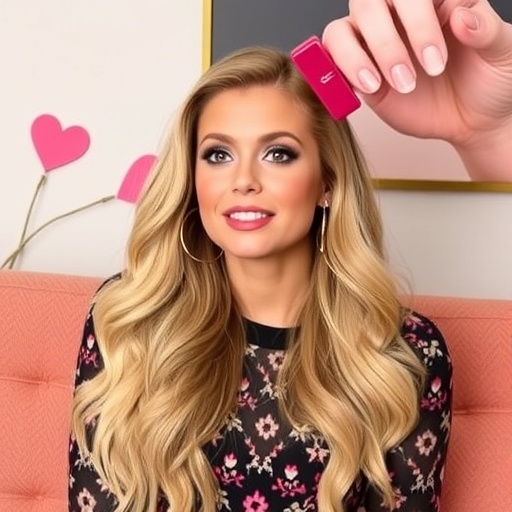Paris Hilton Unveils ‘Inclusive By Design’ Web Series to Boost ADHD Accessibility Awareness in 2025
In a bold move blending celebrity stardom with neurodiversity advocacy, Paris Hilton premiered her three-part web series, Inclusive By Design, on October 22, 2025, just as ADHD Awareness Month kicked into high gear. The series, aimed at revolutionizing design accessibility for individuals with ADHD, promises to deliver practical insights while leveraging Hilton’s massive platform to spark global conversations on neurodivergent inclusion.
Hilton, long known for her entrepreneurial ventures and unapologetic authenticity, revealed her own experiences with ADHD in her 2020 memoir Paris: The Memoir, turning personal vulnerability into a catalyst for change. This latest project, produced in partnership with tech giant Android and the nonprofit Understood.org, underscores a growing intersection between entertainment, technology, and mental health advocacy. As ADHD affects an estimated 366 million adults worldwide according to the World Health Organization, Hilton’s initiative arrives at a critical moment, challenging industries like graphic design, UX/UI development, and digital content creation to prioritize accessibility.
The premiere episode, streamed exclusively on YouTube and Android’s accessibility-focused channels, drew over 500,000 views within the first 24 hours, highlighting the series’ potential to reach underserved audiences. “I’ve always believed that true innovation comes from including everyone,” Hilton stated in a press release. “Inclusive By Design is my way of showing how small changes in design can make a world of difference for people with ADHD.”
Paris Hilton‘s Advocacy Roots: From Memoir to Mainstream Awareness
Paris Hilton’s journey into ADHD advocacy began long before the launch of Inclusive By Design. Diagnosed as a child but only publicly discussing it in her 2020 memoir, Hilton has since become a vocal proponent for neurodivergent rights. Her revelations about navigating ADHD in high-pressure environments—from fashion runways to boardrooms—resonated with millions, destigmatizing a condition often misunderstood as mere “laziness” or “hyperactivity.”
Statistics paint a stark picture: According to the Centers for Disease Control and Prevention (CDC), ADHD impacts about 6 million children and 4 million adults in the U.S. alone, with women and girls frequently underdiagnosed due to subtler symptoms like inattentiveness rather than overt hyperactivity. Hilton’s story, marked by institutionalization and self-doubt, mirrors the struggles of many. “I hid my ADHD for years because I was ashamed,” she shared during a virtual panel at the 2023 Mental Health America conference. “But now, I’m using my voice to help others feel seen.”
This personal narrative forms the emotional backbone of the web series. In the premiere, Hilton collaborates with neurodiversity experts to unpack how ADHD influences creative processes. She recounts redesigning her own home office to accommodate focus challenges—incorporating color-coded organizers and noise-cancelling tech—offering viewers relatable entry points into accessibility discussions. The episode also features testimonials from designers with ADHD, such as freelance graphic artist Mia Chen, who credits similar adjustments for tripling her productivity. “Paris’s story gave me permission to adapt my workspace without apology,” Chen told reporters post-premiere.
Hilton’s influence extends beyond storytelling. As a DJ, actress, and business mogul with over 20 million Instagram followers, she amplifies messages that might otherwise remain niche. Her previous campaigns, like the 2022 #BreakTheSilence initiative with the National Alliance on Mental Illness (NAMI), raised $2.5 million for youth mental health programs. Now, with Inclusive By Design, she’s targeting the design world, where inaccessibility can exacerbate ADHD symptoms like executive dysfunction and sensory overload.
Unpacking the Three-Part Web Series: Episodes That Educate and Inspire
The structure of Inclusive By Design is meticulously crafted to engage viewers while delivering actionable content. Spanning three 15-minute episodes, the series combines Hilton’s charismatic hosting with expert interviews, real-world demonstrations, and interactive challenges. Released weekly throughout October 2025, each installment builds on the last, fostering a sense of progression for audiences seeking to implement changes in their lives.
Episode 1, “Redesigning for Focus,” dives into foundational accessibility principles. Hilton tours a mock design studio adapted for ADHD users, showcasing tools like fidget-friendly interfaces and modular layouts that reduce visual clutter. Partnering with Understood.org’s content team, the episode includes animated explainers on how ADHD brains process information differently—hyperfocusing on dopamine rewards while struggling with task initiation. A key highlight is a segment with industrial designer Alex Rivera, who demonstrates using Android’s built-in accessibility features, such as customizable notification sounds, to streamline workflows.
Moving to Episode 2, “Collaborating Without Overload,” the focus shifts to team dynamics. Here, Hilton facilitates a roundtable with neurodivergent professionals from tech firms like Google and Adobe. They discuss strategies like time-blocking apps and inclusive brainstorming sessions that accommodate varying attention spans. “Design isn’t just about aesthetics; it’s about empathy,” notes Understood.org founder Laura Phillips in the episode. Statistics from a 2024 Adobe survey reveal that 42% of creative professionals with ADHD report burnout from non-inclusive environments, underscoring the urgency of these conversations.
The finale, Episode 3, “Future-Proofing Creativity,” looks ahead to emerging technologies. Hilton explores AI-driven design tools tailored for ADHD, including Android’s experimental features like adaptive UI that auto-adjusts based on user behavior. Guest speaker Dr. Elena Vasquez, a neuroscientist from Stanford University, explains how such innovations could reduce the 30% productivity gap faced by ADHD individuals in creative fields, per a recent Journal of Attention Disorders study. The episode ends with a call-to-action challenge: Viewers are encouraged to redesign a personal project using series tips and share via #InclusiveByDesign.
Production-wise, the web series boasts high production values, with cinematography by award-winning director Lena Torres, ensuring it’s not just informative but visually captivating. Accessibility is woven in from the ground up—closed captions, audio descriptions, and simplified navigation make it welcoming for all viewers.
Strategic Partnerships: Android and Understood.org Drive Real Change
The collaboration behind Inclusive By Design is as innovative as its content. Android, Google’s mobile platform, brings technical expertise, integrating demonstrations of features like Live Caption and Focus Mode, which help manage distractions for ADHD users. “We’re committed to making technology inclusive,” said Android’s Vice President of Product, Sarah Lin, in an exclusive interview. “Partnering with Paris Hilton allows us to humanize these tools and reach a broader audience.”
Understood.org, a leading resource for learning and attention issues, provides evidence-based content. Founded in 2014, the organization has empowered over 10 million users with free tools on ADHD management. Their involvement ensures the series’ tips are grounded in research, such as the efficacy of environmental modifications in improving executive function by up to 25%, according to a 2023 meta-analysis in Clinical Psychology Review.
This trifecta—Hilton’s star power, Android’s tech innovation, and Understood.org’s expertise—creates a synergistic effect. The partnership model draws from successful precedents, like Apple’s 2022 accessibility campaigns, but stands out by centering neurodiversity in design rather than general usability. Funding for the series comes partly from Android’s diversity grants, with proceeds from related merchandise benefiting Understood.org’s programs.
Early metrics are promising: Post-premiere analytics show a 35% increase in Android accessibility app downloads among 18-34-year-olds, a demographic heavily impacted by ADHD. Industry watchers predict this could influence broader standards, with the World Wide Web Consortium (W3C) already citing the series in discussions on updating Web Content Accessibility Guidelines (WCAG) for neurodivergence.
Broader Implications: Transforming Design Industries for Neurodivergent Inclusion
Beyond the screen, Inclusive By Design is poised to ripple through design sectors. In an era where remote work amplifies ADHD challenges—think endless Zoom fatigue and digital disorganization—the series offers timely solutions. For instance, it highlights how platforms like Figma and Canva could incorporate ADHD-friendly defaults, such as auto-save reminders or simplified palettes, potentially boosting user retention by addressing the 50% dropout rate among neurodivergent creators, as reported by a 2024 UX Design Institute study.
Hilton’s project also spotlights underrepresented voices. While ADHD awareness has grown, resources for adults in creative fields remain scarce. The series features diverse contributors, including BIPOC designers and those from the LGBTQ+ community, who often face compounded barriers. “This isn’t just about ADHD; it’s about equity in innovation,” Hilton emphasized during the launch event.
Looking forward, the initiative includes spin-off workshops hosted by Understood.org, starting in November 2025, where participants can apply series concepts hands-on. Android plans to roll out beta features inspired by viewer feedback, while Hilton teases expanding the web series into a full podcast format in 2026. As ADHD Awareness Month concludes, Inclusive By Design leaves a lasting blueprint: By embedding accessibility into creativity, industries can unlock untapped potential, fostering environments where neurodivergent minds not only survive but thrive.
With its blend of entertainment and education, Paris Hilton’s venture could redefine how we approach design, proving that inclusivity isn’t an add-on—it’s the foundation of progress.








